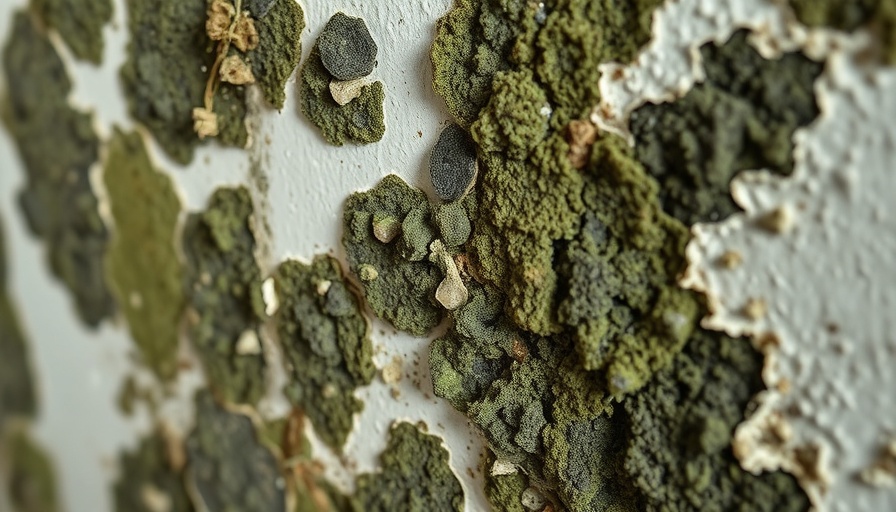
Understanding Mold: A Growing Concern in Portland Homes
Mold is not merely an aesthetic nuisance; it poses significant health risks, especially in moisture-prone regions like Portland. This urban environment, characterized by its damp climate, creates a fertile ground for various types of mold, including Stachybotrys chartarum, often referred to as black mold. Such strains can release harmful toxins, placing residents at risk for health complications.
Recognizing the Signs of Mold Exposure Symptoms
Early detection of mold symptoms can be crucial for maintaining health. Initial indicators resemble standard allergies: sneezing, nasal congestion, and itchy eyes. However, as exposure continues, these symptoms may evolve into more severe respiratory issues like chronic cough, wheezing, and shortness of breath. According to the Portland Clinic of Natural Health, if these symptoms improve while away from home, it is a strong signal that mold may be present.
Why Indoor Air Quality Matters: The Hidden Dangers
Indoor air quality (IAQ) is often compromised by pollutants, including mold spores. Mold thrives on moisture, and Portland's humidity accentuates this risk. Routine assessments of IAQ, including humidity levels and air filters, can help mitigate these dangers. Regular monitoring is essential; tools like dehumidifiers not only regulate moisture but also contribute to overall health improvements by reducing airborne allergens.
The Link Between Mold Exposure and Serious Health Issues
Exposing oneself to mold can lead to chronic health concerns, ranging from neurological issues to chronic lung diseases. Symptoms classified as “mold sickness” often include fatigue, headaches, and cognitive difficulties. Prolonged exposure can escalate problems for individuals with pre-existing conditions such as asthma or weakened immune systems. Recognizing these health impacts is critical in preventing more severe complications.
Causative Factors: Moisture Control and Home Management
Mold presence is often a symptom of underlying moisture problems, such as leaks or inadequate ventilation. Homeowners must proactively check for signs of water damage, including peeling paint, water stains, or musty smells. Steps to enhance home ventilation and moisture control can vastly improve indoor conditions and deter mold growth.
Actionable Steps for Mold Prevention and Remediation
Homeowners should adopt a preventive approach to mold management. Here are some key actions:
- Identify and Repair Sources of Moisture: Ensure that leaks from roofs, windows, and plumbing are addressed immediately.
- Enhance Ventilation: Use fans in bathrooms and kitchens, and maintain a good flow of air throughout the house.
- Use Dehumidifiers: Aim to keep indoor humidity at 30-50% to inhibit mold growth.
- Regular Monitoring: Check for visible mold growth and other indicators of moisture regularly.
- Seek Professional Help: If mold is suspected, engaging experts for thorough assessments and remediation can be invaluable to health and safety.
The Importance of Professional Mold Removal
While DIY mold removal might seem tempting, it can often leave underlying issues unaddressed. Experts are equipped to handle mold safely and effectively, using techniques to ensure that the problem does not return. Professional remediators identify moisture sources, address them comprehensively, and apply measures to prevent future outbreaks.
Empower Yourself with Knowledge: Recognizing Symptoms
Homeowners, renters, and landlords alike must remain vigilant about the signs of mold exposure. By educating oneself about potential symptoms and prevention tactics, individuals can take proactive steps to protect their health and well-being.
Take Action Now: Safeguard Your Home and Health
Ultimately, understanding the health impacts of mold exposure is vital for maintaining a safe living environment. Don't ignore the warning signs—take the time to assess your home and seek professional advice if you suspect mold is present. Implementing preventative measures can protect you and your loved ones from serious health risks caused by mold.
 Add Row
Add Row  Add
Add 




 Add Row
Add Row  Add
Add 

Write A Comment